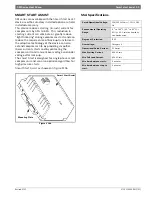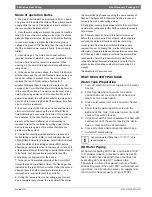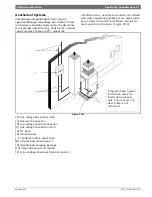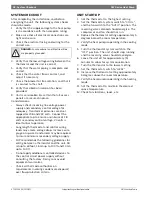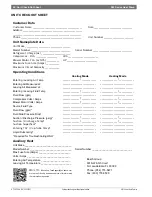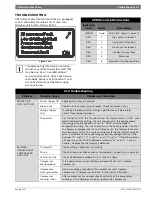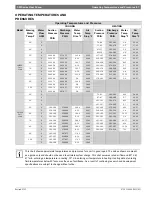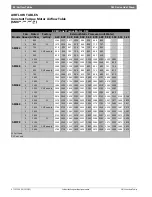
SM Series Heat Pump
SM Series Heat Pump
6 720 220 406 (2015/02)
Subject to change without prior notice
52
|
Troubleshooting
UNIT OFF ON
HIGH PRESSURE
CONTROL
Discharge
pressure too high
In “COOLING” mode: Lack of or inadequate water flow. Entering water
temperature is too warm. Scaled or plugged condenser. In “HEATING”
mode: Lack of or inadequate air flow. Blower inoperative, clogged filter
or restrictions in duct work
Refrigerant
charge
The unit is overcharged with refrigerant. Reclaim refrigerant, evacuate
and recharge with factor recommended charge.
High pressure
Check for defective or improperly calibrated high pressure switch.
UNIT OFF ON LOW
PRESSURE
CONTROL
Suction pressure
too low
In “COOLING” mode: Lack of or inadequate air flow. Entering air
temperature is too cold. Blower inoperative, clogged filter or
restrictions in duct work. In “HEATING” mode: Lack of or inadequate
water flow. Entering water temperature is too cold. Scaled or plugged
condenser.
Refrigerant
charge
The unit is low on refrigerant. Check for refrigerant leak, repair,
evacuate and recharge with factory recommended charge.
Low pressure
switch
Check for defective or improperly calibrated low pressure switch.
UNIT SHORT
CYCLES
Unit oversized
Recalculate heating and or cooling loads.
Thermostat
Thermostat installed near a supply air grill; relocate thermostat.
Readjust heat anticipator.
Wiring and
controls
Check for defective or improperly calibrated low pressure switch.
INSUFFICIENT
COOLING OR
HEATING
Unit undersized
Recalculate heating and or cooling loads. If excessive, possibly adding
insulation and shading will rectify the problem
Loss of
conditioned air by
leakage
Check for leaks in duct work or introduction of ambient air through
doors or windows
Airflow
Lack of adequate air flow or improper distribution of air. Replace dirty
filter
Refrigerant
charge
Low on refrigerant charge causing inefficient operation
Compressor
Check for defective compressor. If discharge is too low and suction
pressure is too high, compressor is not pumping properly. Replace
compressor.
Reversing Valve
Defective reversing valve creating bypass of refrigerant from discharge
of suction side of compressor. Replace reversing valve
Operating
pressures
Compare unit operation pressures to the pressure/temperature chart
for the unit.
TXV
Check TXV for possible restriction or defect. Replace if necessary.
Moisture,
noncondensables
The refrigerant system may be contaminated with moisture or
noncondensables. Reclaim refrigerant, replace filter dryer, evacuate the
refrigerant system, and recharge with factory recommended charge.
Unit Troubleshooting
Problem
Possible Cause
Checks and Correction


